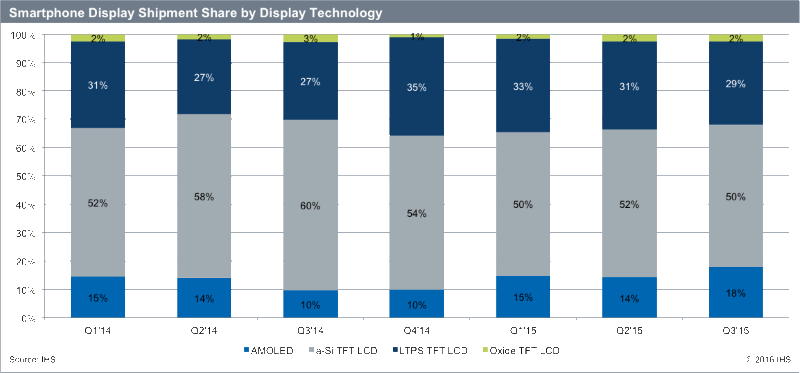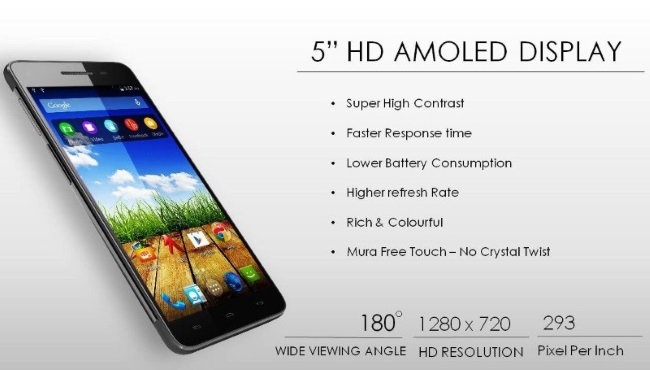Full high-definition (FHD) panels reached a record 21% of the smartphone display market in the third quarter (Q3) of 2015, according to research from IHS. The new levels were due in large part to increases in active-matrix organic light-emitting diode (AMOLED) panel adoption by Samsung and others. Increasing demand from the Chinese smartphone market, and the popularity of the Apple iPhone 6S Plus, also added to growth in unit shipments of FHD panels that are able to show 1080p images, according to IHS. AMOLED displays comprised 18% of all smartphone display unit shipments in Q3 2015, up from 10% in Q3 2014.

The Samsung group has relied on AMOLED as an important differentiating feature in its proprietary Galaxy smartphones for six years, as it helps the company achieve better color performance, on-cell touch, and slimmer and lighter form factors. To expand market adoption, Samsung Display recently changed its smartphone display strategy to begin selling AMOLED panels to external customers.
Typically your smartphone or tablet will have an LCD or AMOLED screen, and some will say that you can’t see a difference in clarity between the two. But, there are advantages to AMOLEDs because they are derived from a simple, thin layer of organic polymers that light when an electric current interacts with them and because they don’t require a backlight. AMOLEDs are also able to produce blacks so deep black that the screen pixels can shut off, which saves battery life.
Other smartphone manufacturers such as OPPO, Gionee, vivo, Meizu, Lenovo, and Huawei brands took advantage of the AMOLED technology and used it in their devices beginning in the second half of 2015. Additionally, products like the Google Nexus 6P, the Microsoft Lumia 950XL, the Meizhu Pro 5, and the recently announced BlackBerry Priv also have AMOLED displays.
In addition to the display type, the size of the screens are getting larger. Led by the rising popularity of the iPhone 6S Plus and other large smartphones, unit shipments of 5.0-inch-and-larger displays surpassed those of smaller displays for the first time in Q3 2015. While quarter-over-quarter unit shipments of 5.0-inch-and-larger displays grew 21% in Q3, smartphone displays smaller than 5.0 inches fell 6%.

The IHS Smartphone Display Market Tracker provides a quarterly update on smartphone display shipments, technology development, features trends and smartphone market dynamics. For more information: call +1 844 301 7334 or email ..
Advertisement





